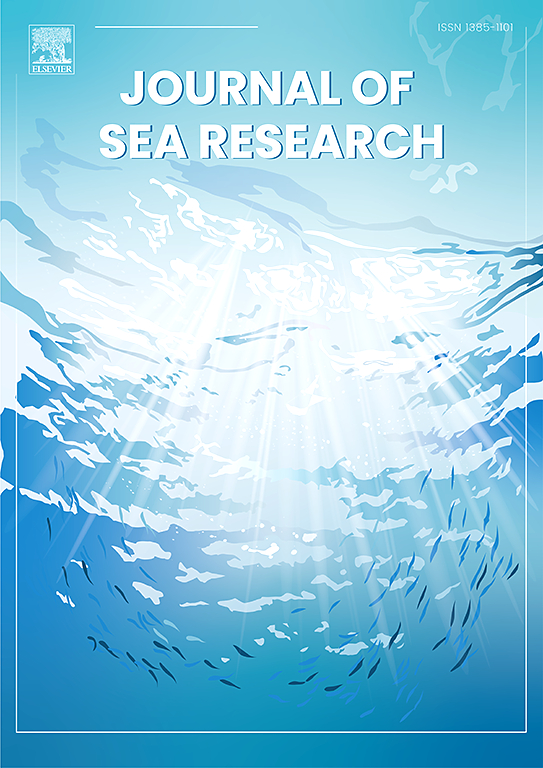Social-ecological system approach relevant for modelling the ecological niche of a mangrove gastropod at small regional scale
IF 2.9
4区 地球科学
Q2 MARINE & FRESHWATER BIOLOGY
引用次数: 0
Abstract
The gastropod Terebralia palustris is found in mangroves from the Indo-Pacific, where it plays important ecological roles and is fished by humans. As such, it reflects interactions occurring within the socio-ecosystem, although information regarding its regional distribution and ecological niche is uneven. The present study aimed at defining the relative importance of factors of the mangrove socio-ecological system (MSES) on the realized niche of T. palustris at the regional scale. We studied its distribution at the scale of Mayotte Island (France, Indian Ocean), including local ecological knowledge and environmental memory held by population. To this end, a survey campaign of the 29 mangroves of Mayotte allowed mapping its occurrence and correlating the spatial pattern to factors of the MSES related to three dimensions of the niche (accessibility, abiotic, and biotic) pertaining to both societal and ecological components. Questionnaire interviews revealed both past presence and current presence undetected by the survey campaign. At the scale of Mayotte, the gastropod is found on large and deep mangroves, distant from the sea by a deep central and external mangrove, where Avicennia marina is not the only mangrove tree species and the canopy is relatively opened, at the bottom of watersheds holding large urban areas. Our study showed that dealing with both ecosystemic and societal subsystems and their involvement in each dimension of the niche concept is a promising way of understanding the drivers of species distribution in anthropized systems.
与小区域尺度红树林腹足动物生态位建模相关的社会生态系统方法
腹足动物Terebralia palustris在印度太平洋的红树林中被发现,在那里它起着重要的生态作用,被人类捕捞。因此,它反映了社会生态系统内部发生的相互作用,尽管关于其区域分布和生态位的信息是不平衡的。本研究旨在确定红树林社会生态系统(MSES)因子在区域尺度上对古柽柳生态位实现的相对重要性。研究了其在马约特岛(法国,印度洋)尺度上的分布,包括当地生态知识和人口持有的环境记忆。为此,对马约特岛29个红树林进行了调查,绘制了其发生情况,并将空间格局与生态位(可达性、非生物和生物)的三个维度相关的MSES因素进行了关联,这些因素与社会和生态成分有关。问卷访谈揭示了调查活动未发现的过去和现在的存在。在马约特岛的规模上,腹足类动物生长在大型而深的红树林上,远离大海,有一个深的中央和外部红树林,在这里,Avicennia marina不是唯一的红树林树种,树冠相对开放,位于拥有大片城市地区的流域底部。我们的研究表明,处理生态系统和社会子系统以及它们在生态位概念的每个维度中的参与是理解人类化系统中物种分布驱动因素的一种有希望的方法。
本文章由计算机程序翻译,如有差异,请以英文原文为准。
求助全文
约1分钟内获得全文
求助全文
来源期刊

Journal of Sea Research
地学-海洋学
CiteScore
3.20
自引率
5.00%
发文量
86
审稿时长
6-12 weeks
期刊介绍:
The Journal of Sea Research is an international and multidisciplinary periodical on marine research, with an emphasis on the functioning of marine ecosystems in coastal and shelf seas, including intertidal, estuarine and brackish environments. As several subdisciplines add to this aim, manuscripts are welcome from the fields of marine biology, marine chemistry, marine sedimentology and physical oceanography, provided they add to the understanding of ecosystem processes.
 求助内容:
求助内容: 应助结果提醒方式:
应助结果提醒方式:


